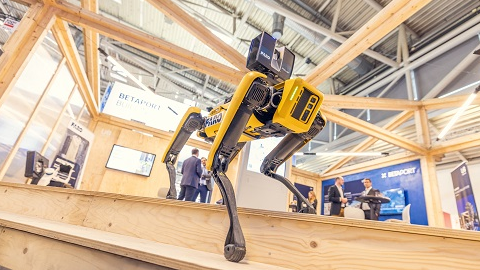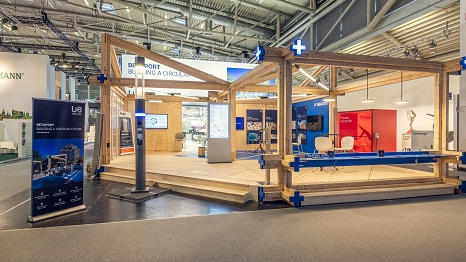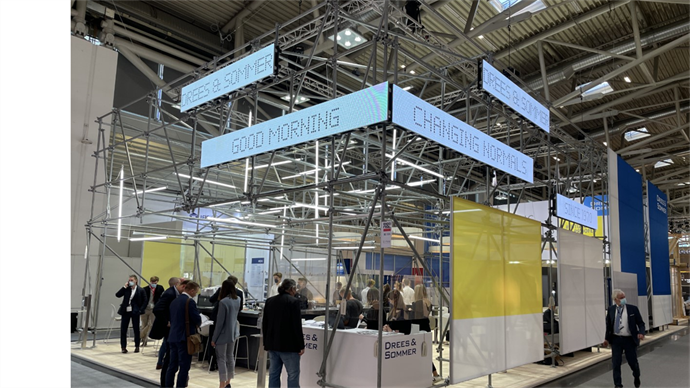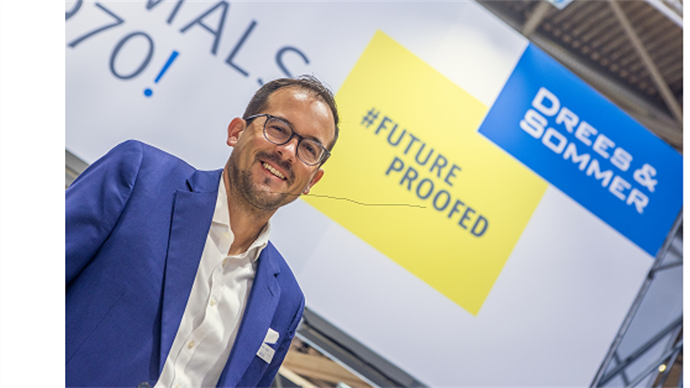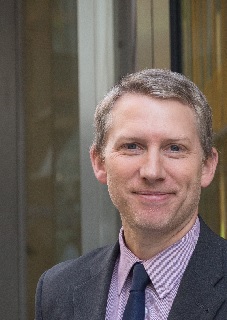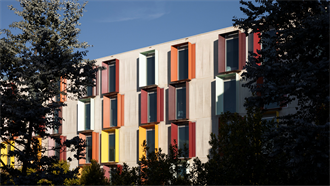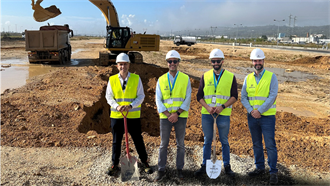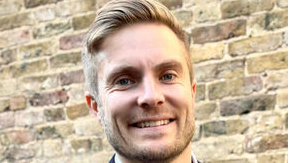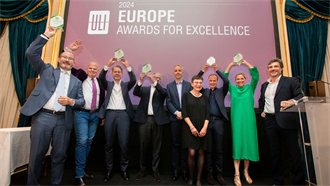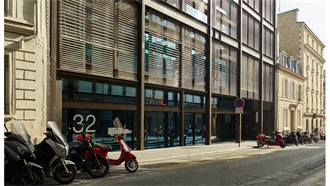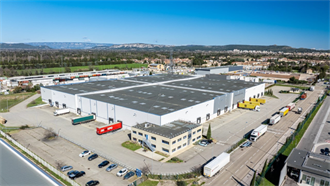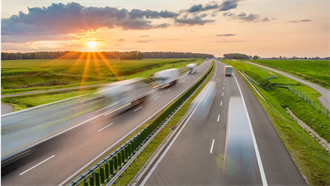Drees & Sommer, the European consulting, planning and project management group, is proving its point at this year’s Expo Real.
Twelve months ago, the company promised to roll out a design concept for clients called 'Cradle to Cradle'.
True to its word, not only has it been using the concept of recycling materials and structures at construction projects for its clients, it has applied the same principles to its Expo trade fair booth - by using materials from its stand from 2019.
‘Our trade fair booth was designed in line with the principles of the circular economy,’ said the company.
‘Normally, major events such as trade shows generate tons of waste in the form of printed walls, countless promotional items and extravagant catering,’ said Sandra Brand, associate partner and head of corporate communications.
‘Yet much of it is avoidable or could be done in a much more environmentally friendly way. At our trade fair booth, we put this into practice so that guests can experience how recyclability could become the norm.’
In addition to the impressive steel frame, the recycled textile ribbons framing the exhibition booth are real eye-catchers. Wooden structures such as the reception counter are made of enhanced reclaimed timber.
Catering is ‘regional and vegetarian', in keeping with the sustainable mindset, which is aimed at encouraging visitors to use resources more consciously.
The result is a completely sustainable exhibition booth that minimizes waste after the trade fair.
Drees & Sommer said it was already applying the 'Cradle to Cradle' philosophy in a lot of construction projects for clients. ‘A large number of structures, materials and building products are designed in such a way that, at the end of their useful life, they no longer end up in the construction industry’s mountain of waste, a pile that is already much too big,’ the company said.
Drees & Sommer’s executive board spokesperson, Steffen Szeidl, explained: ‘To establish a truly circular economy, we need to focus on materials that are harmless to health and that can later be deconstructed into components of the same kind, allowing them to be fully recycled.’
He pointed to the oak floorboards, the chairs, the steel structure, and textiles being used. The bar is made from textiles such as old jeans.
The company is using Trevira CS textiles. After the usage phase, the materials are mechanically processed to facilitate subsequent recovery. For the material recycling system to actually work, they have to consist 100% of Trevira CS fibers and yarns. In addition, they must be clean, dry and free from any contaminants and composite materials. Possible uses for such recycled materials include thermal or sound insulation products.
Said Szeidl: ‘This has all been designed by our engineers. Whether it's a trade fair booth or real estate project, if designed correctly, any structure can be transformed from a graveyard of resources into a depository of raw materials.’
He pointed out how the real estate sector is said to be responsible for 50% of the waste in Europe. ‘That’s unbelievable. We have to do something new for our clients but also for our booth here.’
After the dismantling of the Expo Real 2019 booth, the metal framework was stored in the warehouse of the fair booth construction partner and can be reused again and again in future trade fairs. The system can be adapted to a different booth design without any need for specially produced new parts. Last but not least, if the requirements for the booth design are significantly changed in the future, the whole metal framework can then be sold and used in the construction industry, or it can be returned to the steel recycling process.
Robot dog
At booth B2.121 next door, the 'Special Show by Drees & Sommer' has been together with partners demonstrating innovative tools that will shape construction in the future.
Its partners are NavVis showcasing a backpack scanner for use in construction management for quality control and construction documentation, Imerso with scanner software for comparison with BIM, Phoenix Contact with Robodog for use in facility management, and Faro with Robodog + Scanner for use in the field of construction management for quality control and construction documentation.
The futuristic-looking robot dog at the booth has been attracting much attention.
Szeidl smiled: ‘This is our new dog! That’s robodog. Innovation, which also encompasses digitalisation, is a major theme for us this year. The other major theme is sustainability.’
‘We are a leading company in terms of innovation. The robodog really helps us on construction sites. With a camera inside, it can get pictures, so nobody has to go out into an area where people are unable to.’
Next to robodog is a construction helmet with camera that can be linked to software for designing new plans for clients such as where people might sit inside an office building. This is cheaper than drawing by hand.

